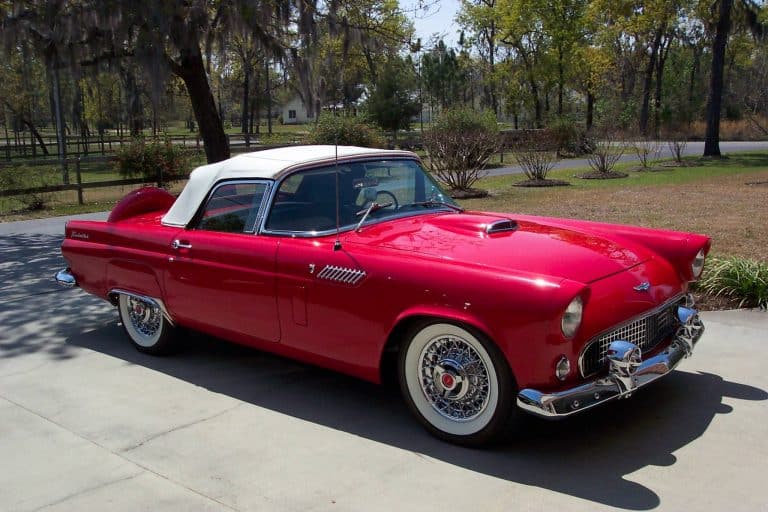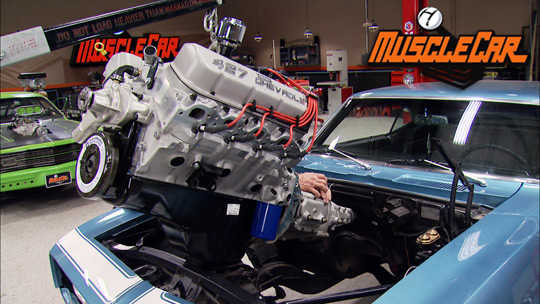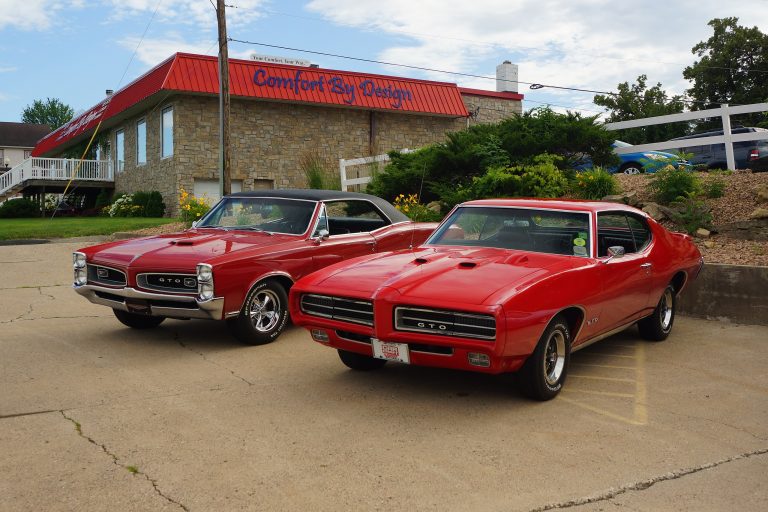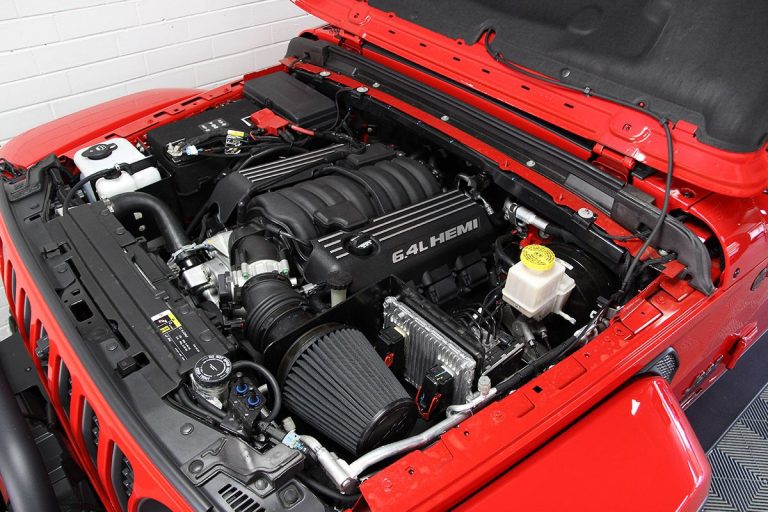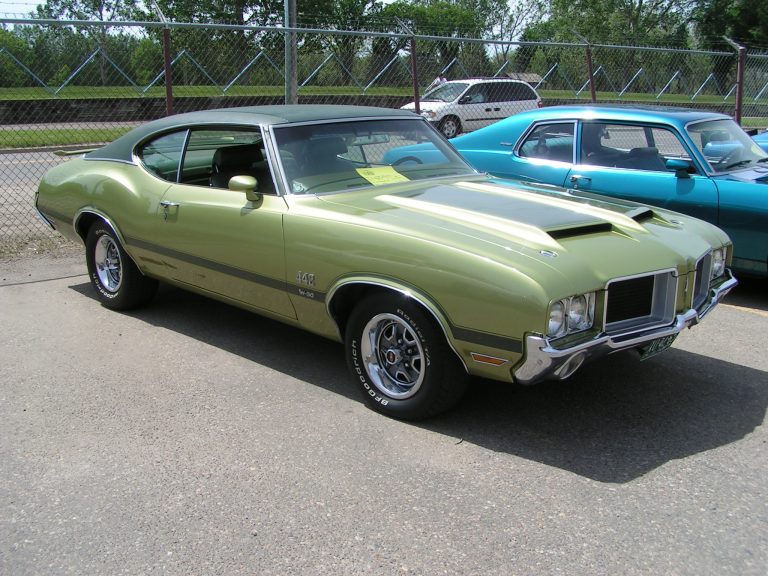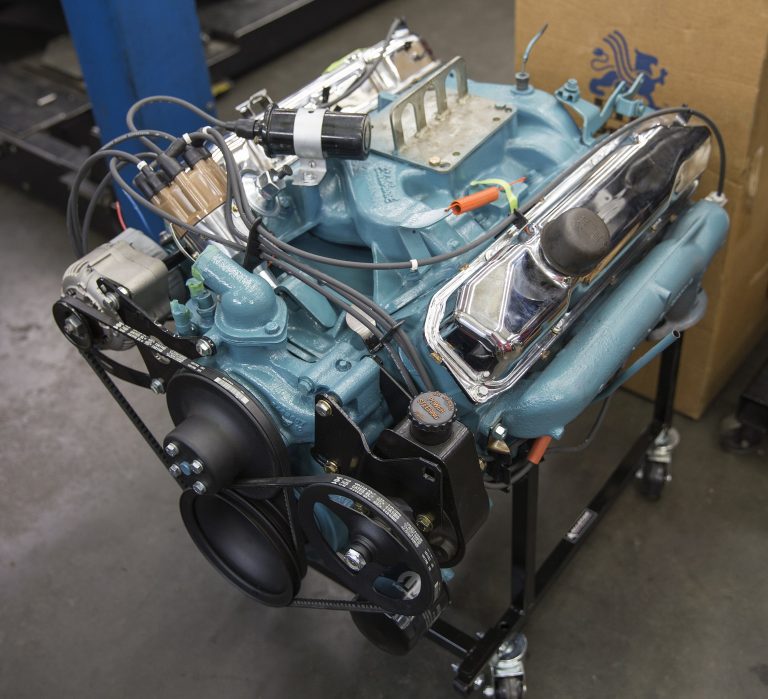What Was The First Muscle Car?

Meet Austin
Austin has been a muscle car enthusiast since an early age with his Dad having a collection including a 1965 Mustang, 1968 Mercury Cougar, and a 1969 Mustang Mach 1 among many others. Austin received a technical writing degree from University of Colorado Denver with the intentions of becoming an automotive journalist. His automotive knowledge, enthusiasm, and hands on experience allow him to craft detailed, accurate, and high-quality articles for the passionate Muscle Car Club audience.
The muscle car world is full of a ton of controversial topics. What is the best muscle car ever made? What manufacturer lays at the top of the muscle car heap? Can anything modern compare to the muscle cars of the golden age? Despite what many people will tell you, there isn’t a right or wrong answer to any of those questions. And the same applies to perhaps the most controversial question of all which has ignited countless arguments in numerous forums for decades – What was the first muscle car?
Even the origin of the term “muscle car” is highly debated with no clear answer. Some say that the source of the phrase can be traced back to the late 1940s, around the time that Oldsmobile and Cadillac overhead valve engines first entered circulation. With their introduction, automotive reviewers described the 303 and 331 engines as having “plenty of muscle,” introducing the muscle title to the general public.
Others say that that is a load of rubbish and that the term “muscle car” didn’t plant its roots until the mid-1960s with the introduction of the Pontiac GTO and the 389 cid V8. Pontiac proudly brandished the muscle car title in advertisements for the GTO. The ad campaign certainly made an impact. It seared the muscle car mantra into the brains of many, paired directly with an image of the 1964 GTO.
With so many hard-line opinions circulating about the pioneer muscle car, there’s really only one way to come to a conclusion about the first muscle car argument – you’ll have to decide on your own. In this article, we’ll lay out the contenders and make an argument for each. But, in the end, it’s all subjective.
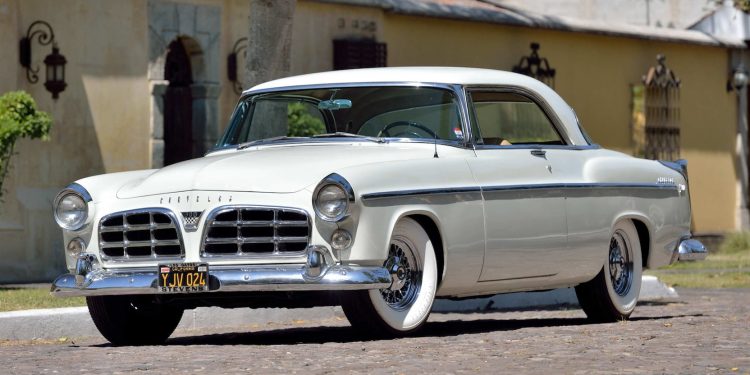
What Is A Muscle Car?
Okay, we won’t spend too much time on this subject and beat a dead horse, but the topic of what a muscle car actually is has a place in this article. When arguing about the first muscle car, most people get too caught up in the heat of the argument to keep the muscle car definition fully in mind. It is an important consideration, as many of the contenders for the coveted first spot fail to meet some of the most important prerequisites to even be considered a muscle car.
So, what are the requirements? This topic, once again, changes depending on who you ask. However, this one can be pinned down pretty exactly. The most accepted definition of a muscle car is a midsize model that has the larger V8 from a manufacturer’s full-size line. Generalized even more, a muscle car is a midsized car that has a focus on straight-line performance, delivered by a large V8. One of the most crucial components here is the midsize chassis. That is where a lot of so-called muscle car authorities mess up their classifications.
The 1960s and early 1970s were unquestionably the age of the muscle car. The period between 1964 and 1971 will always be considered the “golden age” of the high-displacement, low-quarter-mile time muscle car formula. With that being said, that isn’t where the formula started, and that statement often gets nostalgic enthusiasts heated. In reality, the midsize, performance V8 recipe predates the 1960s by a long shot. The reputation of 1960s muscle cars is rightfully high – they truly did it best. But, to say that the first muscle car is the Pontiac GTO would be dismissing some of the models that gave Pontiac engineers the inspiration in the first place.
1955 Chrysler C-300
In 1955, consumer cars and high-horsepower performance cars occupied two very different spaces. Cars like the Chevrolet Corvette and Ford Thunderbird were considered too flashy and frivolous for a middle-class working man to realistically drive on the daily. They weren’t exactly family-friendly options. Chrysler broke that mold and combined the two categories in 1955 with the first of the Chrysler letter-cars, the C-300.
Chrysler C-300 Engine
So, we’ll start with the performance aspect of the C-300 which, at the time, was completely unmatched. In fact, its origins weren’t civilian-focused at all. The C-300 was a homologation special, built with NASCAR in mind first and capabilities as a people-hauler second. With an OHV 331-cube FirePower Hemi V8 under the hood, the Chrysler C-300 was the first American car to breach the 300-horsepower barrier. The race-proven results are undeniable. The C-300 won 27 of 45 NASCAR races in 1955 and a record-setting two-way flying mile clock at 127.6 mph at Daytona.
The C-300 unquestionably has the performance angle down pat. So much so that many people traded them in shortly after purchase as they were too aggressive on the street. The lopey performance camshaft and solid valve lifters made it unpleasant to drive on the street. It had a no-compromise attitude towards performance. That sounds like a muscle car attitude to me.
Chrysler C-300 Chassis
With the 331 FirePower Hemi under the hood, it is impossible to argue that the C-300 doesn’t have a muscle car powerhouse. However, that is only half of the puzzle. Earlier we mentioned that there are two crucial components to a muscle car – the engine and the chassis. The C-300 has the engine box checked, but what about the chassis?
The 1955 Chrysler C-300 is built on the Chrysler New Yorker chassis – one that had been in production since the late 1930s. More specifically, the C-300 coupe utilized the C-68 chassis, which was the platform used by the 1955-1956 New Yorker. The Chrysler New Yorker acted as the company’s mid-level model, sandwiching the lower-tier Windsor Newport and the higher-tier Imperial. The New Yorker, and C-300 as a result, is significantly smaller in terms of wheelbase when compared to the larger Imperial model. The C-300 has a wheelbase of 126 inches, while the Imperial has a wheelbase of 130 inches. The C-300 is also 5 inches shorter than the Imperial, making it a notably smaller car.
On paper, Chrysler still classified the C-300 as a full-size coupe in 1955. However, with the notable size discrepancy between the C-300 and the Imperial, an argument can be made that it filled the midsize segment for Chrysler in 1955. Another argument can be made that both are full-size cars, with the C-300 being full-size and the Imperial being fuller-size. That distinction is what might land the C-300 outside of the muscle car camp, depending on your viewpoint. From where I’m sitting, I think it leans in favor of being included.
1957 AMC Rambler Rebel
When it comes to muscle cars, a few manufacturers tend to hog the spotlight. Chevrolet, Ford, Pontiac, and Plymouth all fight at the top of the proverbial muscle car mountain, while other influential manufacturers are stuck at the bottom, often forgotten about completely. AMC is a company that gets left out of the muscle car discussion despite arguably pioneering the muscle car class. The most standout example is the 1957 AMC Rambler Rebel. The Rebel maintained the pillars of muscle car-dom straight from the get-go.
The Rambler Rebel arose out of the exact situation that we described above. The American auto titans were beating out AMC in sales and performance and by 1957, AMC Chairman George Romney had enough. His grand plan was to create a car to fill a hole in the American car market at the time – the midsize, high-performance segment. That sounds an awful lot like the spot that muscle cars occupy, right? Well, that’s exactly the case and a big reason why George Romney should be considered the godfather of American muscle. Prior to the Rambler Rebel, AMC had been known for its dependable economy cars. However, Romney was on a mission to change that image which worked in some ways and failed in others.
Rambler Rebel Engine
The real kicker for the Rebel was the massive 327-cube V8 under its hood. The 5.4L V8 was special for a few reasons and made the Rebel a trailblazer in a few aspects. The AMC 327 was the first production engine to feature electronic fuel injection, adding even more forward-thinking intrigue to the Rebel. The 327 also made the Rebel the first post-WWII midsized car to feature a large block V8. The 5.4L V8 produced 255 horsepower. At Daytona Speed Week in 1957, the Rebel set a 0-60 time of 7.2 seconds, only 0.2 seconds off the 0-60 time of a fully-optioned 1957 Corvette.
AMC Rambler Rebel Chassis
Upon first glance, the Rambler Rebel isn’t exactly what you’d picture if the term “muscle car” came up in conversation. To be frank, it is odd looking. Its overall shape is reminiscent of a bread box and its bodylines are anything but flowing. Not to mention the cheese grater grill with the headlights built-in. It just doesn’t fit the brutish silhouette that we are used to from 60s and 70s muscle cars.
But, despite the Rebel not necessarily fitting the muscle car stereotype in the looks department, it is considered a midsize chassis. The Rambler Rebel was built on a unibody frame that was carried over from the 1956 four-door Rambler. All Rebels were produced in four-door hardtop form. The Rambler was considerably smaller than most other domestic cars at the time with a 108-inch wheelbase. In comparison, the 1957 Chrysler Imperial has a wheelbase of 129 inches. The Rebel’s shorter wheelbase and body-frame construction decreased weight substantially. Weighing in at 3,550 lbs, the Rebel’s comparably lightweight is what made it so fast.
So, looking at the 1957 Rambler Rebel from a 1000-foot view, does it satisfy all of the necessary requirements to be considered a muscle car? Our answer is certainly yes. It is nearly impossible to argue that the Rebel doesn’t have muscle car performance. The 255-horsepower big block 5.4L V8 was a powerhouse at the time. The fact that a four-door family saloon car could nearly chop a Corvette is all you really need to know about the Rebel and its worthiness in the muscle car class.
1949 Oldsmobile “Rocket” 88
1949 is 14 years before the release of the Pontiac GTO and when most people agree that the muscle car was born. However, a strong case can be made that Oldsmobile initiated the muscle car craze over a decade before the GTO came around in 1963. 1949 saw the release of a car that would play a significant role in shaping the American automotive landscape and American culture as a whole. The Oldsmobile Rocket 88 featured a new form of high displacement V8 and was built on a fresh, smaller chassis. In addition to being the influence for Ike Turner’s song “Rocket 88,” often considered to be the first Rock n Roll song ever recorded, the 88 introduced a new formula to the automotive market.
Oldsmobile Rocket 5.0L V8
The lifeblood of the Oldsmobile Rocket 88 is the 5.0L V8 that powers it. Prior to the 1950s, flathead V8s were all the rage. They were simple, rugged, cheap to build, and cheap to buy. However, they were limited by their old-school technology. Flathead V8s suffered from major airflow problems and low compression ratios inherent in their design. Those technical limitations made power hard to come by.
Oldsmobile broke the mold with the 303 cid Rocket V8 engine that replaced the older flatheads. While overhead valve engines had been mass-produced prior to 1949, the 5.0L Rocket was the first production OHV V8 post-WWII. The 5.0L Rocket V8 produced 135 horsepower and 253 lb-ft of torque. While that doesn’t sound like much now, it was an absolute heater of an engine in 1949. The Rocket 88 would go on to be a massive success in motor racing. It took home the victory in six of the nine NASCAR late-model races in 1949. It would continue to rack up 10 wins in 1950 and 20 in 1952. All of the wins, in large part, were due to the Rocket V8 powerhouse.
Oldsmobile “Rocket” 88 Chassis
Like the Rambler and Chrysler C-300 that we’ve already covered, the Rocket 88 was built on a pre-existing Oldsmobile chassis. The Oldsmobile 76 was the company’s entry model car which came in multiple body styles. For the 1949 model year, Oldsmobile swapped to the GM A-body platform away from the C-body platform that preceded it. As a result, the Oldsmobile 76, and Rocket 88, were shortened by 6 inches compared to the 76 based on the C-body platform. The Oldsmobile Rocket 88 was offered in a multitude of body styles including a 2-door coupe, 4-door sedan, and 4-door station wagon.
Despite being 6 inches shorter than the previous C-body Oldsmobile 76, the Rocket 88 was still considered a full-size car by Oldsmobile. A large part of that classification likely boils down to marketing and other expectations by GM. In terms of the Oldsmobile’s classification as the first muscle car, it could truly go either way. The 5.0L Rocket V8 brought Oldsmobile into a more modern state. With flathead V8s going out of style, 1949 was the perfect time for them to introduce an overhead valve option. The 135-horsepower Rocket 88 was the fastest American production car in 1949. The performance is certainly there. The issue is the chassis. The 88 is a comparably light vehicle, especially due to the shortened wheelbase. However, Its full-size classification might cause some purists to eliminate it from the muscle car category.
What Was The First Muscle Car? – Summary
Some questions in the muscle car community can’t be answered definitively. That is certainly the case for the first muscle car argument. While it is easy to point to a few cars that made a huge impact on the muscle cars of the 60s and 70s, there are both arguments for and against them being called true muscle cars.
The Chrysler C-300 is certainly a pioneer model that should certainly be in the first muscle car conversation. The C-300s FirePower Hemi V8 and factory performance parts made it a serious contender against other more expensive cars at the time. While the C-300s powertrain definitely fit the bill, its use of the New Yorker chassis still classified the C-300 as a full-size car.
The AMC Rambler Rebel is a standout car that often gets forgotten among more popular models. It also doesn’t help that AMC only sold 1,500 Rebels due to their high cost. Regardless, it was one of the most capable cars on the planet in 1957. The 255 horsepower 327 V8 under the hood was plenty powerful for the lightweight chassis. The Rebel’s 108” wheelbase certainly made it a midsize car by all metrics. In terms of its potential place as the first muscle car, a very strong case can be made for the Rambler Rebel.
The Rocket 88 is perhaps the most qualified to be called the first muscle car. The 5.0L Rocket V8 established a precedent for V8 engines to come. In combination with the lightweight chassis, the Rocket 88 is a certified muscle car. What’s even more impressive is that the Rocket 88 came out 14 years before the GTO.

